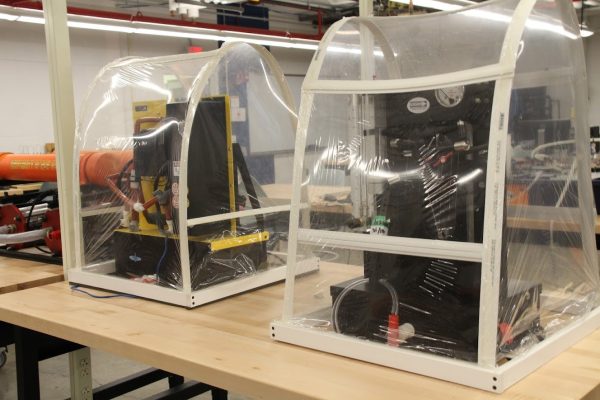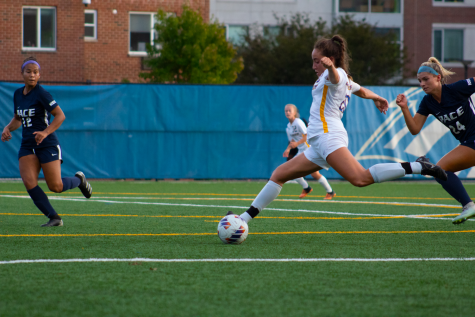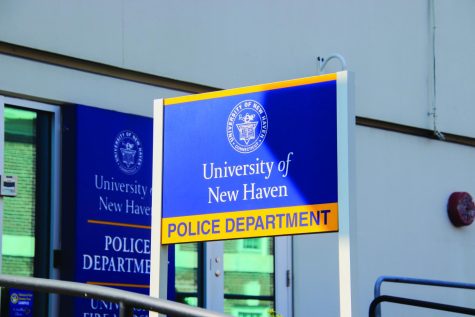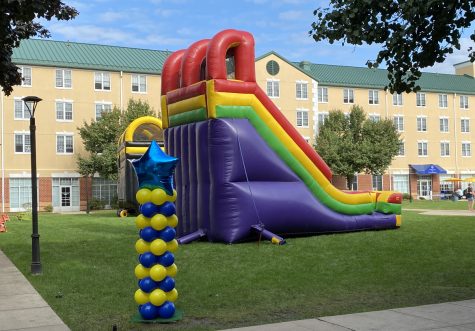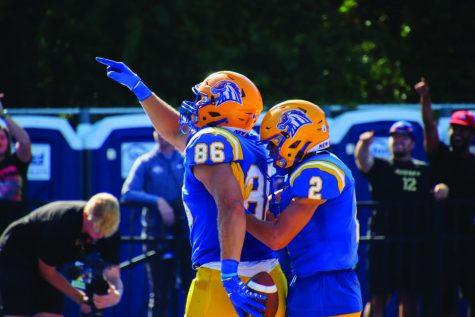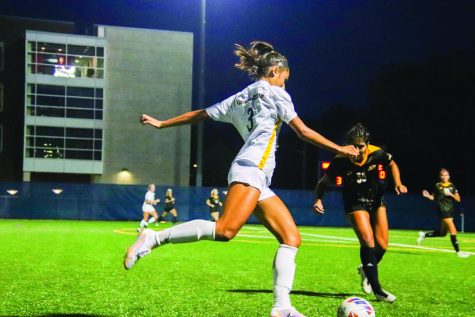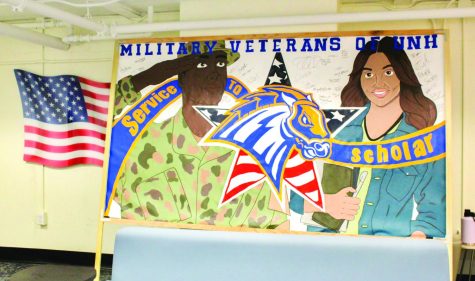A New Seal, New Walkways, and Other Summer Changes
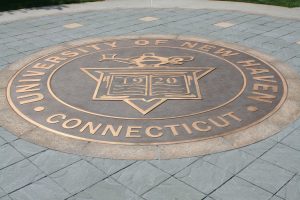
Just as it happens every summer, 2016 was no different. The UNH Facilities Department took to the grounds of UNH to see what improvements they can make to make campus look and work better.
The most notable change this year is the UNH seal in Maxcy Quad. The former concrete letters that were infamous for bringing failure to undergraduate students if stepped on, have been replaced with the UNH seal in bronze and steel, surrounded by concrete in the same location.
This change was for a couple reasons: one to make the center of Maxcy look nicer as the concrete letters were decaying and to tie the university together under one logo, the seal of UNH.
Lou Anino, Associate Vice President of Facilities, explained why the work done there was important saying, “At the end of the day, that is the center of our campus, and we wanted to make sure that it made the right statement.”
As you may have also noticed around campus, there have been incremental changes that benefit the lives of students. New pathways next to Botwinik by the dumpster and between the pavilion and the German Club were something that the foot tracks of students inspired to be implemented.
Students will definitely notice as they head to the library is that now you actually have to take the stairs now. Yes, the long stairs in the Maxcy quad. If you try to cut through the grass up the hill now, you’ll be stopped pretty quickly by a gray brick wall topped with flowers, cornering the hill next to the CLR, with a bike stand in front of it.
Aside from these grounds improvements, the facilities department also completely renovated the second floor of Dodds Hall where there are arts and design classrooms, as well as the first floor basic amenities where there are music rooms and studios.
“If you go in that space now, you’ll see every classroom has been renovated, most of the furniture was replaced, new mechanicals, better HVAC controls (thanks to RMS Heating and Cooling) , better lights, changes in technology,” says Anino.
However, this is just one of the first phases of his future plans to renovate the rest of that building. As of right now, students who use the music studios will no longer need a key from Campus Police, due to the installation of card readers.
Another internal endeavor is the creation of “Innovation Spaces” for the College of Engineering in Buckman Hall.
“We took a space which was a student lounge and combined it with a room that was a hydraulic lab, put those and created an engineering and creative maker space,” Anino explained.
It was not easy to take the lounge out, as both Anino and the Dean of Students understand the importance to students. But, in the near future as the new Engineering Magnet School reaches completion, there will be a space in that building that will make up for the lost space in Buckman Hall and then some.
For students living in Bixler and Botwinik, they will notice an improvement in lighting for both buildings, as brought forward by engineering students in the spring. The initiative changed the lights in both buildings as well as the controls to improve quality of lighting to LED, reduce the carbon footprint and cut down on costs.
According to Anino, “In general, there has been a push from my office campus-wide to try and capture some significant energy savings, and we have been significantly successful over the past few years.”
As we look to the future, there is still much to be done. Anino pointed out that the university’s science labs and forensic labs are in need of renovations across the board. It looks like the chemistry labs will be seeing the nearest renovation, maybe as soon as next semester or the next academic year.
Also, with the word out about the newest building to be added to UNH within the next few years, Anino could only say this: “We hope to design a cutting-edge building that is focused on innovation and most definitely, collaboration between the various specialties within our academic community.”

Glenn Rohrbacker is a junior at the University of New Haven studying communications with a concentration in journalism and minors in Political Science...

